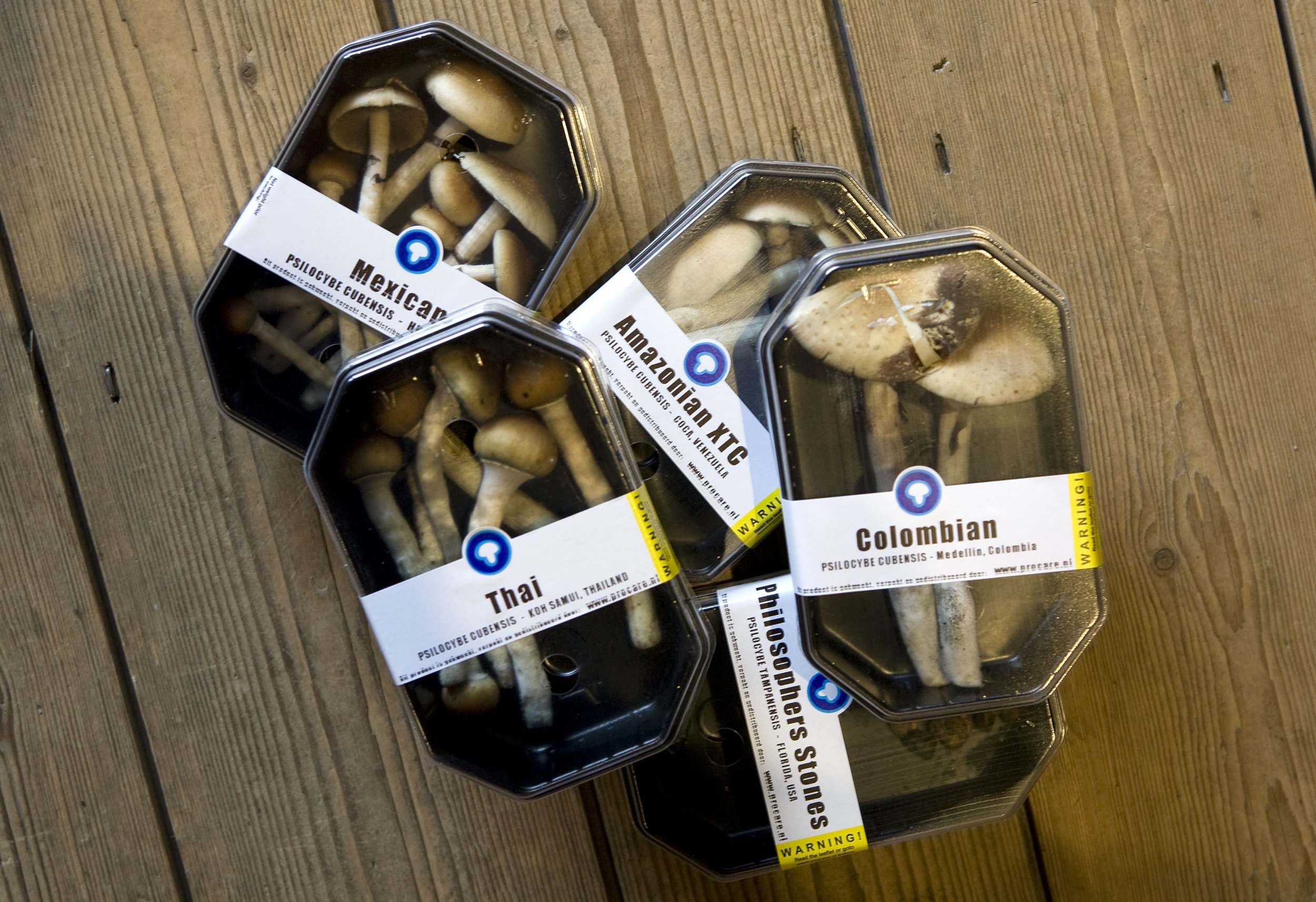
Scientists have long wondered how and why magic mushrooms create psilocybin, a psychoactive chemical that causes hallucinations when ingested. Two new papers published this month provide some answers, one of which paves the way for an easier way to create the psychedelic compound.
Around 200 types of mushrooms produce psilocybin, and they've been used ceremonially for millennia. Since trip-inducing fungi were introduced to Western audiences by financier and author Gordon Wasson in a Life magazine article in 1957, people have been using them for recreational purposes throughout the world. Albert Hofmann, the Swiss chemist who synthesized LSD, identified psilocybin as the active ingredient in magic mushrooms and determined its structure in 1959. At that time, he also figured out how to synthesize it using biochemistry.
However, nobody knew—until now—how mushrooms themselves make psilocybin. In a study published in the journal Angewandte Chemie, Dirk Hoffmeister and colleagues sequenced and mapped the genes in the "magic" mushroom Psilocybe cubensis. Scientists have known for a while that these genes produce several enzymes that combine to create psilocybin, but nobody knew the sequence and order of this seemingly mystical process. Through a series of trial-and-error type tests, Hoffmeister and colleagues figured out the correct order. "There was some Wow! in the air" when the team finally figured it out," says Hoffmeister, with the University of Jena in Germany.
One of the most surprising findings is the simplicity of the process, says David Sherman, a medicinal chemist at the University of Michigan who wasn't involved in the paper. In only five steps, the mushroom's enzymes convert tryptophan, a widely occurring amino acid (a building block of protein) into psilocybin.
The paper could pave the way for people without advanced knowledge to produce psilocybin on their own, using commercially available synthetic biology kits, Sherman says.
Hoffmeister says the finding could theoretically make the mass-production of psilocybin easier and less expensive, though he expects "it will take quite some effort until we make headway." He also notes that this scientific study was done for the purpose of better understanding nature's "elegant" way of making psilocybin, and is not intended as "a 'drug endorsement' or "get-high-quick" kind of thing." Using naturally occurring enzymes would avoid the expensive and difficult biochemical tools currently required to make the compound.
In another study published this month in the online journal bioRXiv, though not yet peer-reviewed, researchers sequenced genomes from three different mushroom species and found the cluster of psilocybin-producing genes in each. The way the small cluster apparently traveled between species, without alteration, suggests that it was passed through a peculiar process called horizontal gene transfer. In this process, a gene can literally move between different species by physical contact, Sherman explains. This transfer could have happened when, for example, a spore of a psilocybin-producing mushroom physically landed on top of another mushrooms species, and was incorporated into its genome, Sherman says. Because the gene cluster is so small, it can be absorbed and then passed on.
Sherman says horizontal gene transfer of psilocybin-producing genetic bits still happens and will likely enable more mushrooms to produce this psychedelic compound.
Its wide distribution in unrelated species and endurance over time suggests that the psilocybin gene may give mushrooms a survival advantage, says Jason Slot, an assistant Professor at the Ohio State University and study lead author. Other research shows that psilocybin confuses predators by mimicking the neurotransmitter serotonin, and that its effects in humans is an coincidental byproduct of this ability.
Sherman marveled at how simple it is for mushrooms to make psilocybin, especially considering many useful compounds like antibiotics—derived from fungi and bacteria—take more than 50 steps. "Mother nature makes it quite elegantly," Hoffmeister says.
Uncommon Knowledge
Newsweek is committed to challenging conventional wisdom and finding connections in the search for common ground.
Newsweek is committed to challenging conventional wisdom and finding connections in the search for common ground.
About the writer
Douglas Main is a journalist who lives in New York City and whose writing has appeared in the New York ... Read more
To read how Newsweek uses AI as a newsroom tool, Click here.








